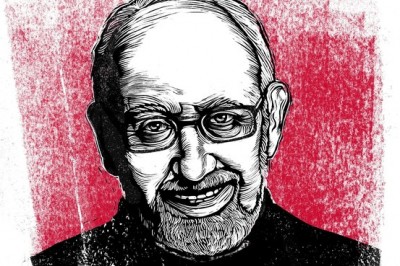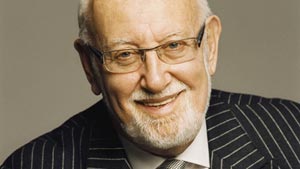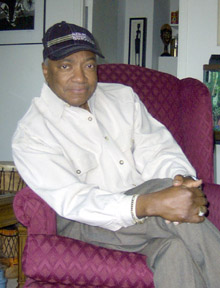Bruce Lundvall didn’t sign Eva Cassidy
“Eva had her own spirit, her own vision. But I didn’t sign her.”Over the course of his career, Bruce Lundvall (Blue Note president from 1984 – 2010) has had to take a pass on many artists who came knocking on his door with a demo. While he has a reputation for being known as Doctor Yes, Lundvall has also been in plenty of situations where he’s had to deliver discouraging news to an aspiring musician. Then again, he’s also had regrets, the biggest one being his decision to not sign singer-songwriter Eva Cassidy to a contract as a leader.
“Eva sang one song and I fell for it,” says Lundvall. “I was stunned. Some people have the touch of God in their hand. It’s beyond practice, study, execution. Eva had her own spirit, her own vision. But I didn’t sign her.”
Eva Cassidy was born on Feb. 2, 1963, and grew up in the suburbs of Washington, D.C. Early in her life she became a lover of all kinds of music and as she got older feasted on a variety of tunes, from Ella Fitzgerald and Louis Armstrong to Stevie Wonder and Ray Charles to Joni Mitchell and Bonnie Raitt. She spent many hours in her room listening to records and playing her guitar after getting the six-string basics from her father when she was 9. She was drawn to jazz and folk, but could also find her voice in a range of music from R&B to rap. That’s when she intuitively began to learn to not be a blatant imitator, but a song-stylist interpreter.
As Cassidy grew older, she played in country and techno-pop bands and in her 20s gravitated to Black Pond Studios in Rockville, Md., owned and operated by bassist and engineer Chris Biondo. The first project where she sang lead vocals was the eponymous 1988 album by pop group Method Actor, led by her high school friend David Lourim (who renamed himself David Christopher). Cassidy was also commissioned to do the cover artwork, which she was the most proud of. Biondo liked what he heard and kept her in his stable as a session singer for the various D.C.-area projects he was recording. In 1990, he helped her form the Eva Cassidy Band, which gigged regionally.
Two years later, Biondo introduced her to Chuck Brown, the Godfather of Go-Go, who after hearing her voice wanted to cool his dance hall grooves by recording a duet album of jazz and blues standards, including Fever, God Bless the Child and You’ve Changed. The Other Side, released on Brown’s own Liaison Records, was a hit locally and four years later managed to crack the charts in England as a result of Cassidy’s rendition of Over the Rainbow.
During this time at Biondo’s studio, Cassidy was introduced to Al Dale, a music aficionado who was working for the National Park Service as Chief of Public Affairs in Washington, D.C. When he first heard her voice he thought she was black, until she emerged from the recording booth. He was surprised to not see an Ella clone but a thin, light-skinned blond woman, who he said in an interview by Laura Bligh on Cassidy’s website had “such a big voice [that] comes out of this little box.” Dale continued to follow her burgeoning career, soon became her manager and encouraged her to set off on her own as a leader. But, he says, she was more interested in doing something like being a Stevie Wonder backup singer.
What impressed—but also challenged Dale—was Cassidy’s desire to follow her passion for music without regards to category. In Bligh’s interview, he said, “Usually an artist gets into one genre or another, like R&B or pop or folk or whatever, and I think the idea that she could pull it all off was more of a challenge to her than anything else.” He said that sticking to one zone would have been too boring for her.
Still, despite her shyness about her career and her onstage persona, Cassidy was maturing as a performer to the point where Dale made a demo of her songs, which he began to shop to various labels—most of whom replied that while she had a fine voice, they couldn’t hear her potential. But, when he received the demo, Lundvall was intrigued. He called Dale and asked him to bring her to New York.
“Al brought Eva to my office,” Lundvall says. “Even though she had her guitar, she sang ‘Amazing Grace’ a cappella. It was stunning. She had a wonderfully distinctive voice.” Lundvall decided to pursue his interest a step further. He traveled to the D.C. area to hear Cassidy perform live at Fleetwood’s, a blues club owned by Mick Fleetwood in Alexandria, Virginia’s Old Town district. Again Lundvall was blown away. “Eva was singing gospel, country and standards,” Lundvall says. “So I asked her after her show, what’s your direction? Blue Note is a jazz label. And she told me, ‘I just like to sing.’”
Dale remembers that Lundvall did offer Cassidy a demo deal, with a budget to record three or four songs. She went to Biondo’s studio and Dale said, “So, in putting together this tape, Eva did what Eva does. She had four songs, each one was different.”
Lundvall sent his Blue Note confidant and sidekick Michael Cuscuna to see her perform. “Michael came back and said, ‘No direction.’” Cassidy’s eclecticism, which came naturally to her, once again became puzzling for a label—especially a jazz label—to try to market her. Dale recalls Lundvall saying, “Well, you know, Al, I hear her but I really don’t know what to do, where to go with this. But I’m still interested.” But Lundvall didn’t sign her.
Dan Ouelette, October 2014, Jazztimes
Art work: Zina Saunders






Leave a Reply